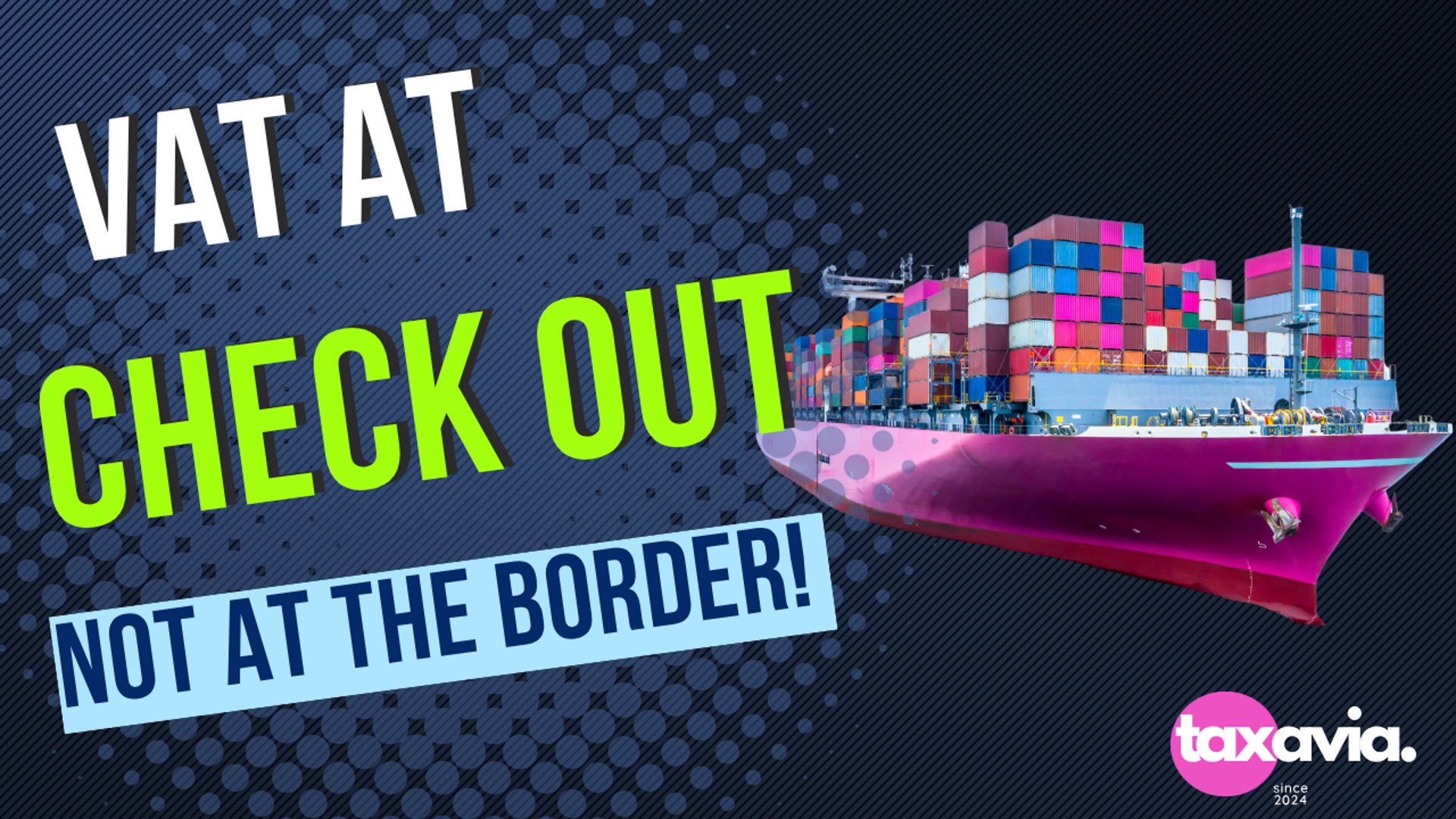Simplifying EU VAT Collection on Imports: What Businesses Need to Know
The EU just hit the “refresh” button on tax rules! 💡 They've agreed on a new directive to make VAT collection way easier for distance sales of imported goods. Think smoother systems, less paperwork, and no more tax headaches for online sellers. 🛒📦💶
VATCUSTOMS
Team Taxavia
6/2/20254 min read

On May 13, 2025, the Council of the European Union reached a consensus on a directive aimed at streamlining the collection of Value Added Tax (VAT) for distance sales of imported goods. This move is part of the EU's broader efforts to modernize tax systems and enhance compliance in the digital age.
Key Highlights:
Supplier Liability for Import VAT:
Under the new directive, suppliers will become responsible for collecting and remitting VAT on imported goods sold to EU consumers. This shift is designed to improve VAT collection efficiency and reduce administrative burdens on customs authorities.Encouragement to Use the Import One-Stop Shop (IOSS):
By making suppliers liable for VAT, the directive incentivizes the use of the IOSS system. IOSS allows businesses to register in a single EU member state to report and pay VAT for all distance sales of imported goods across the EU, simplifying the process significantly.Alignment with Customs Code Reform:
This directive complements ongoing negotiations on the Union Customs Code reform, aiming for a more cohesive and efficient approach to customs and tax procedures within the EU.
Implications for Businesses:
Enhanced Compliance Requirements:
Businesses engaging in cross-border sales to EU consumers will need to adapt to the new VAT collection responsibilities, ensuring accurate calculation and timely remittance of VAT.Adoption of IOSS:
Utilizing the IOSS can streamline VAT reporting processes, reduce administrative overhead, and facilitate smoother transactions within the EU market.Preparation for Implementation:
Companies should begin assessing their current systems and processes to accommodate these changes, seeking guidance if necessary to ensure compliance when the directive comes into effect.
The EU's agreement on this VAT directive marks a significant step towards simplifying tax collection for imports, promoting fairness, and enhancing the efficiency of the internal market. Businesses involved in distance sales to EU consumers should proactively prepare for these changes to remain compliant and capitalize on the streamlined processes offered by systems like the IOSS.
Let’s break it down — minus the legal jargon.
🧾 What’s Changing?
Until now, VAT on low-value goods imported into the EU (especially those under €150) was often collected at the point of import. This process wasn’t always smooth. Packages got delayed at customs, buyers were surprised by extra charges, and the system left room for fraud or underreporting.
The new directive flips the script:
The seller – not the buyer – will now be responsible for collecting VAT at the point of sale.
This applies when goods are sold to EU consumers and shipped from outside the EU.
💡 What Does This Mean for Sellers?
If you're an online retailer, marketplace operator, or dropshipper sending goods into the EU, here’s how this impacts you:
1. You collect VAT upfront.
At the time of checkout, you charge your EU customer the correct VAT rate for their country. No more awkward surprises at the door for your buyers.
2. You declare and pay VAT via IOSS.
The Import One-Stop Shop (IOSS) is the EU’s solution to simplify this. Register once, report monthly, and you’re compliant across all EU member states.
✅ Good news: No need for multiple VAT registrations across Europe.
⚠️ Caution: If you're not using IOSS, you may have to take on more complicated customs and VAT processes.
3. You’re liable.
That means you – not your shipping partner or customer – are on the hook for proper VAT reporting. Better systems, clearer records, and good tax advice will be key.
🆚 Before vs. After: What's the Key Change?
BEFORE (Current System):
VAT was usually collected at the border, when the goods entered the EU.
For goods valued under €150, sellers could opt into the Import One-Stop Shop (IOSS) to charge VAT at the point of sale — but it was voluntary, and many sellers didn’t use it.
If IOSS wasn’t used, the buyer often paid VAT on delivery, sometimes with extra admin or handling fees added by the shipping company.
This led to delivery delays, unhappy customers, and uneven competition, especially when some sellers under-declared values to avoid tax.
AFTER (With the New Directive):
Sellers (or electronic interfaces like marketplaces) will be legally responsible for collecting VAT at the time of sale, not at the border.
This applies to distance sales of imported goods to EU customers, regardless of whether the seller is based inside or outside the EU.
The system encourages mandatory use of IOSS, streamlining VAT registration and reporting across the EU.
Buyers won’t be hit with surprise VAT bills upon delivery — the tax is already paid when they check out.
🚀 Why Is the EU Doing This?
This change is part of a broader effort to:
Modernize tax rules for the digital economy
Ensure fair competition between EU and non-EU sellers
Reduce the burden on EU customs authorities
Encourage broader adoption of the IOSS system, which streamlines tax collection
It also aligns with upcoming reforms to the Union Customs Code, making it part of a larger EU plan to boost transparency and efficiency in cross-border trade.
🔍 What Should You Do Next?
If you sell into the EU, especially low-value goods, now is the time to:
Review your VAT compliance strategy
Register for the IOSS (if not already)
Update your checkout systems to collect correct VAT rates per EU country
Train your team or consult tax professionals for the transition
💬 Final Thoughts
This isn’t just a bureaucratic change — it’s a signal. The EU is getting serious about digital-era taxation. For sellers, it means more responsibility, but also a clearer, faster, and more predictable trade environment.
In the end, being VAT-compliant doesn’t just keep you legal — it makes your business smoother and more trusted by customers across Europe.
Have questions or experiences with IOSS? Book a meeting with us – let’s help each other navigate the shift.
This post is based on a Council of the EU press release dated 13 May 2025. You can read the official announcement here.
Contact us
Whether you have a request, a query, or want to work with us, use the form below to get in touch with our team.


